
BLOGS
MY BLOGS
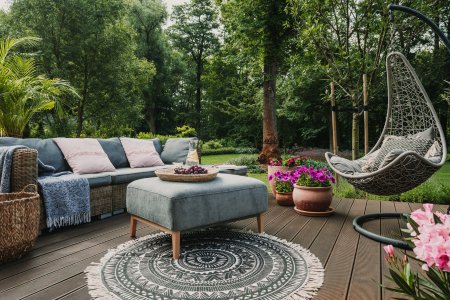
EASY WAYS TO DECORATE YOUR PATIO & POOL AREAS
EASY WAYS TO DECORATE YOUR PATIO & POOL AREAS
Who does not love lounging by the pool or hosting a barbecue on the patio during warm summer days? Your outdoor spaces are an extension of your home, and with a bit of creativity and effort, you can turn them into inviting retreats that you will love spending time in. Whether you are looking to spruce up your patio for personal enjoyment or to impress potential buyers, we have you covered with these easy and affordable ways to decorate and dress up your patio and pool areas. 1. Define Your Space with Furniture Start by selecting the right furniture to anchor your outdoor living area. Opt for weather-resistant materials like rattan, aluminum, or teak. A comfortable sofa, chairs, and coffee table can create a cozy seating area for relaxing with friends and family. 2. Add a Pop of Color with Cushions and Throws Inject some personality into your outdoor space with vibrant cushions and throws. Choose colors and patterns that complement your patio furniture and reflect your style. Cushions and throws add comfort and make your outdoor seating area feel warm and inviting. 3. Create Ambiance with Lighting Set the mood in your outdoor oasis with strategic lighting. Hang string lights above your patio or pool area at night to create a magical ambiance. You can also use lanterns, candles, or solar-powered stake lights to add a soft glow and enhance the atmosphere. 4. Incorporate Outdoor Rugs Lay down outdoor rugs to define different zones within your outdoor space. Rugs add warmth and texture and help anchor your furniture arrangement. Opt for durable, weather-resistant rugs that can withstand exposure to sunlight and rain. 5. Accessorize with Potted Plants and Greenery Bring life to your patio and pool areas with potted plants and greenery. Choose various plants in different sizes and textures to create visual interest. Place potted plants strategically around your outdoor space to soften hard surfaces and add a touch of nature. Keep ample distance from the pool to avoid shedding leaves and other debris from falling into the water. 6. Provide Shade with Umbrellas or Awnings Protect yourself from the sun’s harsh rays by incorporating shade solutions like umbrellas or awnings. Position umbrellas over seating areas or lounge chairs to provide relief from direct sunlight. Retractable awnings are another stylish option that offers adjustable shade whenever needed. 7. Add Privacy with Screens or Trellises Install screens or trellises to create a sense of privacy and intimacy in your outdoor oasis. These decorative elements add visual interest and serve as a backdrop for climbing vines or hanging plants. Choose screens or trellises that complement your outdoor decor and provide the desired level of privacy. 8. Upgrade Your Pool Area with Accessories Take your pool area to the next level with fun and functional accessories. Invest in pool floats, inflatable loungers, and water toys to enhance your poolside experience. Remember to provide ample seating and shade for spectators and guests who prefer to lounge by the pool. 9. Install a Fire Pit or Outdoor Fireplace Add a fire pit or outdoor fireplace to extend the use of your outdoor space into the cooler months. Gather around the fire with friends and family to roast marshmallows, sip hot cocoa, and enjoy cozy evenings outdoors. A fire feature adds warmth, ambiance, and a focal point to your patio or pool area. 10. Personalize with Decorative Accents Finally, finish your outdoor oasis with decorative accents that reflect your personality and style. Hang artwork or mirrors on exterior walls to add visual interest. Incorporate decorative elements like throw pillows, lanterns, and outdoor sculptures to infuse your space with character. Implementing these easy and affordable decorating ideas can transform your patio and pool areas into inviting retreats where you will love spending time. Whether you are hosting a summer soiree or simply unwinding after a long day, your outdoor oasis will be the envy of the neighborhood. So, unleash your creativity and make the most of your outdoor living space.
MORE
What you can afford or the cost to buy?
What you can afford or the cost to buy?
Mortgage Rates Fall and What It Means for Buyers If you want to buy a home, it’s important to know how mortgage rates impact what you can afford and how much you’ll pay each month. Fortunately, rates for 30-year fixed mortgages have come down significantly since the end of October and are currently under 7%, according to Freddie Mac (see graph below): This recent trend is great news for buyers. As a recent article from Bankrate says: “The rate cool-off somewhat eases the housing affordability squeeze.” According to Edward Seiler, AVP of Housing Economics and Executive Director of the Research Institute for Housing America at the Mortgage Bankers Association (MBA): “MBA expects that affordability conditions will continue to improve as mortgage rates decline . . .” Here’s a bit more context on how this could help with your plans to buy a home. How Mortgage Rates Affect Your Search for a Home Understanding the connection between mortgage rates and your monthly home payment is crucial for your plans to become a homeowner. The chart below illustrates how your ability to afford a home changes when mortgage rates shift. Imagine your budget allows for a monthly payment between $2,400 and $2,500. The green part in the chart shows payments in that range or lower (see chart below): As you can see, even small changes in rates can affect your budget and the loan amount you can afford. Get Help from Reliable Experts To Understand Your Budget and Plan Ahead When you’re looking to buy a home, it’s important to get guidance from a local real estate agent and a trusted lender. They can help you explore different mortgage options, understand what makes mortgage rates go up or down, and how those changes impact you. By looking at the numbers and the latest data together, then adjusting your strategy based on today’s rates, you’ll be better prepared and ready to buy a home. _________________ If you’re looking to buy a home, you should know the recent downward trend in mortgage rates is good news for your move. Let’s connect and plan your next steps. Feel free to reach us at Raye@Realty-Executives.com
MORE
Are More Homes Coming onto the Market?
Are More Homes Coming onto the Market?
An important factor shaping today’s market is the number of homes for sale. And, if you’re considering whether or not to list your house, that’s one of the biggest advantages you have right now. When housing inventory is this low, your house will stand out, especially if it’s priced right. But there are some early signs that more listings are coming. According to the latest data, new listings (homeowners who just put their house up for sale) are trending up. Here’s a look at why this is noteworthy and what it may mean for you. More Homes Are Coming onto the Market than Usual It’s well known that the busiest time in the housing market each year is the spring buying season. That’s why there’s a predictable increase in the volume of newly listed homes throughout the first half of the year. Sellers are anticipating this and ramping up for the months when buyers are most active. But, as the school year kicks off and as the holidays approach, the market cools. It’s what’s expected. But here’s what’s surprising. Based on the latest data from Realtor.com, there’s an increase in the number of sellers listing their houses later this year than usual. A peak this late in the year isn’t typical. You can see both the normal seasonal trend and the unusual August in the graph below: As Realtor.com explains: “While inventory continues to be in short supply, August witnessed an unusual uptick in newly listed homes compared to July, hopefully signaling a return in seller activity heading toward the fall season . . .” While this is only one month of data, it’s unusual enough to note. It’s still too early to say for sure if this trend will continue, but it’s something you’ll want to stay ahead of if it does. What This Means for You If you’ve been putting off selling your house, now may be the sweet spot to make your move. That’s because, if this trend continues, you’ll have more competition the longer you wait. And if your neighbor puts their house up for sale too, it means you may have to share buyers’ attention with that other homeowner. If you sell now, you can beat your neighbors to the punch. But, even with more homes coming onto the market, the market is still well below normal supply levels. And, that inventory deficit isn’t going to be reversed overnight. The graph below helps put this into context, so you can see the opportunity you still have now: Bottom Line Even though inventory is still low, you don’t want to wait for more competition to pop up in your neighborhood. You still have an incredible opportunity if you sell your house today. Connect with a real estate agent to explore the benefits of selling now before more homes come to the market.
MORE
Why Your House Didn’t Sell
Why Your House Didn’t Sell
If your listing expired and your house didn’t sell, you’re likely feeling a little frustrated. Not to mention, you’re also probably wondering what went wrong. Here are three questions to think about as you figure out what to do next. Did You Limit Access to Your House? One of the biggest mistakes you can make when selling your house is restricting the days and times when potential buyers can tour it. Being flexible with your schedule is important when you’re selling your house, even though it might feel a bit stressful to drop everything and leave when buyers want to see it. After all, minimal access means minimal exposure to buyers. ShowingTime advises: “. . . do your best to be as flexible as possible when granting access to your house for showings.” Sometimes, the most determined buyers might come from far away. Since they’re traveling to see your house, they may not be able to change their plans easily if you only offer limited times for showings. So, try to make your house available as much as you can to accommodate them. It’s simple. If no one’s able to look at it, how’s it going to sell? Did You Make Your House Stand Out? When selling your house, the old saying matters: you never get a second chance to make a first impression. Putting in the work to make the exterior of your home look nice is just as important as how you stage it inside. Freshen up your landscaping to improve your home’s curb appeal so you can make an impact upfront. As an article from U.S. News says: “After all, if people drive by, but aren’t interested enough to walk through the front door, you’ll never sell your house.” But don’t let that impact stop at the front door. By removing personal items and reducing clutter inside, you give buyers more freedom to picture themselves in the home. Additionally, a new coat of paint or cleaning the floors can go a long way to freshening up a room. Did You Price Your House Compellingly? Setting the right price is extremely important when you’re selling your house. Even though it might feel tempting to push the price higher to maximize your profit, overpricing can scare away buyers and make it hard to sell quickly. Business Insider notes: “. . . the biggest mistake sellers make is overpricing their home.” If your house is priced higher than others like it, it could make buyers lose interest. Pay attention to the feedback people give your agent during open houses and showings. If lots of people are saying the same thing, it might be a good idea to think about lowering the price. For all these insights and more, rely on a trusted real estate agent. A great agent will offer expert advice on relisting your house with effective strategies to get it sold. Bottom Line It’s natural to feel disappointed when your listing has expired and your house didn’t sell. Talk to a trusted real estate agent to figure out what happened and what to reconsider or change if you want to get your house back on the market.
MORE
5 WAYS TO KEEP YOUR KIDS’ CLOSETS ORGANIZED
5 WAYS TO KEEP YOUR KIDS’ CLOSETS ORGANIZED
When living with kids, there’s bound to be overflowing amounts of love, endless laughter, and lots and lots of mess. One part of their bedroom that will never cease to be in a constant state of disorder is their closet. It’s a never-ending battle, and as parents or guardians, you must be ready with a few ideas and strategies to keep their wardrobe organized and free of clutter. Keeping a well-coordinated closet is not just for your sake, it’s for your children too. It impacts the way your child gets ready and sets their mood for the day. If they are attending school, a wardrobe that is easily accessible and properly labeled can get them prepped in no time. It might seem like a trivial thing, but an organized closet can help boost your child’s confidence. That’s why we’ve compiled a list of tips and tricks you can use to keep your kids’ closets in tip-top shape. Clear Out Outgrown Toys & Clothes One thing you should do before organizing your kids’ closets is to purge everything they have outgrown over the years. There is absolutely no point in hoarding too much of their clothes and toys as these will only add to the clutter. Empty their closet and check what should go and what should stay. Everything that is stored in the closet should be what they use. Bid goodbye to the clothes, toys, and other items that your child no longer wears or plays with. Donate or sell these so that other children can put them to good use. To stay on top of clutter, clean out your children’s closets at least twice a year. If dedicating an entire day to this task is a little too much, you can also keep a donation box in the closet or anywhere around your child’s room. When clothes don’t fit anymore or have not been worn at all, they can easily place them in the box. Optimize with Organizing Tools To get the most out of your kids’ closets, tuck their clothes in labeled clear containers, baskets, or bins. Labels are your child’s best friend when it comes to organizing. Just make sure that they can be clearly seen so that your kid knows where everything lives. If you have younger children who don’t know how to read yet, use icons or pictures instead of words. If you’re looking to save space, use ultra-thin, non-slip hangers that are specifically designed for kids’ clothing. You can also try incorporating a hanging organizer as they’re great for small closets. They utilize vertical space that might just be wasted if not taken advantage of. With hanging organizers, you can label clothes with the days of the week so you can prepare your kid’s outfits for school and other activities ahead of time. For your child’s shoes, you can opt for open shelves, door hangers, or even stackable plastic baskets neatly placed in the closet to utilize floor space. These save more space than traditional shoe racks. For shoes that are out-of-season, use storage bins. Create Zones in the Closet Always have your child in mind when rearranging and decluttering their closet. Kids tend to be visual so it’s important to use that to your advantage whenever you’re designing what their closet will look like. Have zones that they can clearly understand within or outside of their closet. For example, for clothes that they frequently wear, use clearly labeled pull-out bins, hooks, or hangers at eye level. Kids love seeing their options right in front of them, so avoid stacking clothes in a way that would only overwhelm them. For out-of-season clothes, it’s important to keep them accessible, however, you can consider hanging them on a rod or simply placing them on a higher shelf. Last, for keepsakes or clothes that contain a lot of memories (first pair of shoes, their favorite holiday dresses, etc.), keep them in a water-tight container and, instead of putting them at the back of the closet, consider setting them down in your garage or storage unit. Keep It Accessible Your kids are not as tall as you are (yet!) so ensure that they can easily reach the clothes, toys, or other items in their closet that they use every day. If you’re running out of storage space that is easily accessible to your child, you can consider using products like low-hung hooks, low hanging rods, drawer units, or an open bin where they can stash their toys Alternatively, you can keep a step-up stool next to kids’ closets so that they can easily reach their clothes without pulling them and creating a mess. Let Your Kids Help Kids learn better through application and collaboration. Let them participate in the cleaning and organizing process as this will help them understand that getting rid of the clothes, toys, and other items they don’t use will make space for the ones that they do. It also teaches them the right place to put their clothes if they don’t intend to use them. As their parent or guardian, you want to make them feel a sense of responsibility and pride in keeping their clothes, toys, and other important items neat, organized, and clutter-free. In hindsight, your kid’s closet is a great way to teach them how to stay organized, let go of the things that no longer serve them, and put everything back where it belongs. You can even turn this into a fun project and bonding activity for you and your children. They can pick out whatever bins, baskets, and other organizers they fancy to give their closet their personal touch. Encourage their creativity by letting them decorate these different containers with their choice of colors, stickers, and pictures. Just don’t forget to label them afterward!
MORE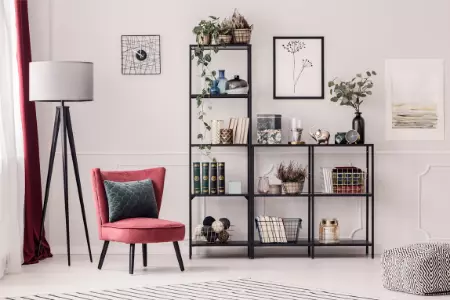
SIMPLE, LOW-COST WAYS TO REVIVE YOUR HOME
SIMPLE, LOW-COST WAYS TO REVIVE YOUR HOME
After spending so much time at home, you may be looking forward to sprucing it up as people start coming over again. But these upgrades don’t have to do serious damage to your wallet. You can revive your home without spending too much by following these inexpensive home improvement tips. 1. Declutter Decluttering is a great first step when trying to freshen up your home and highlight accent furniture that may be buried under knickknacks and other clutter. It’s a cost-free way to improve your living space, but it does more than just revive your home. It’s also been proven to improve mental health and calm anxiety. Start small by decluttering one room at a time so you don’t become overwhelmed. Take out pieces you no longer need or have a connection with. If you haven’t used them in the last six months and they aren’t seasonal, you are unlikely to use them in the coming months, either. ZenBusiness recommends purging your paper as well, as many of your documents, receipts, and memos can easily be discarded. 2. Add Mirrors Mirrors are an easy way to open a space up and give your home a bigger, lighter appearance. The reflection mirrors provide creates the illusion that a room is more spacious and choosing one with an unconventional shape or frame design adds interest to a room. There are many inexpensive options available, and older mirrors are frequently found at thrift shops and sales. Choose one of these and you can paint it to give your room a pop of color or complement accents in the room 3. Revamp Your Walls Few things can have a more striking effect than redoing the walls of a room. If you want something simple, get a few gallons of paint to freshen up your room. Pick a rich color that will make your artwork and fixtures stand out. Wallpaper is another attractive and durable option that has become easier than ever with peel-and-stick options on the market. You can create truly stunning walls with the right wallpaper design, and you can even choose more than one style to add extra interest to the room or make a singular wall stand out. 4. Rearrange Your Shelves Bookshelves can take a lot of space in a room, so they are natural draws to the eye when a person enters. Don’t let this opportunity to revive your home go to waste. Take your traditionally arranged books and style them in a more eye-catching way. It’s both free and effective. Group books together by color, creating a rainbow effect. Alternate how books are resting on the bookshelf between horizontal stacks and upright books. Choose unique accents that complement the colors of the stacks or add plants to give your shelves a warmer effect. 5. Replace Pictures If you have pictures decorating your walls, choose new ones to print and fill frames with. If they’re family photos, choose a variety of sentimental pictures that will make you smile when you look at them. For artwork, original designs can be purchased online and printed at home to save money, or you can design them yourself using an online tool. Getting your home in good shape to open it back up to the world doesn’t have to cost a fortune. Get rid of the clutter, install mirrors, rearrange your bookshelves, replace your pictures, and revamp your walls. Your house will feel like new, and you’ll be proud to have loved ones back in your home.
MORE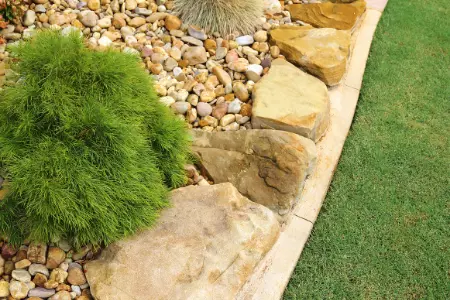
ADDING VALUE TO YOUR PROPERTY BY USING LOW-MAINTENANCE LANDSCAPING
ADDING VALUE TO YOUR PROPERTY BY USING LOW-MAINTENANCE LANDSCAPING
You’re not likely to find gold buried in your front yard, but with a little research and planning, your landscaping can save you time and money. A low-maintenance landscape will also add to your curb appeal and boost your property value. Low-Maintenance Landscaping Basics Low-maintenance landscaping focuses on elements that take care of themselves. Instead of forcing your yard to appear or perform a certain way, we merely enhance it to meet our needs. The result? A landscape that requires less water and upkeep, and lower utility bills. Professional landscapers make decisions based on slope, soil type, and climate. But there are things you can do yourself to lower maintenance. Opt for native plants. Plant according to local conditions. Choose the right grass type for your region. Swap high-maintenance elements for low-maintenance alternatives. Opt for Native Plants Plants that are native to your area offer lots of benefits. They prefer the soil type in your region. They’re less susceptible to pest infestations They attract local pollinators. Most need less water and fertilizer. Pro Tip: Choose plants and flowers that you can easily cut for indoor arrangements. Your dream landscape can also help accent the decor inside your home. Perennials are also preferable to annuals since they’ll come back every year. Plant According to Local Conditions Landscaping will increase your home’s value – but only if you plant according to your geographic region. Decisions that are excellent in arid regions can be disastrous in places where heavy rains are common. Soil composition, sunlight exposure, annual high and low temperatures, and a host of other factors all vary by locale. Make sure to consider them all when planning any landscaping upgrade. It’s also essential to choose turf which will thrive in your area. Warm-season grasses do best in temperatures between 80 and 95 degrees, whereas cool-season grasses thrive up north, where the spring and summer temperatures average between 65 and 75 degrees. Make Plants Property Specific Even properties within the same geographic region can present considerably different conditions. Plants that thrive in the sun may need lots more attention on a property covered in shade trees. If there’s a spot in your yard where water pools, add some absorbing plants to discourage mosquitoes. If you want to plant a tall tree, locate it where it can block wind and sun to lower energy costs. Low-Maintenance Trees Few people want to spend their weekends raking or dragging out the leaf blower. Flowering dogwood, spruce, and maple trees are easy to care for. Plant a cottonwood or sweetgum tree, and you’ll spend hours cleaning up after it. Use Crushed Stone or Mulch Stone and mulch around your home keep water from damaging your foundation. Mulch around your plants will fertilize them, keep moisture in and prevent weeds from sprouting. Mulch also adds a pleasant scent and color to your yard. Crushed stone or pebbles are even easier to maintain because they never need replacing. They provide a nice border and discourage weeds. Swap High-Maintenance Elements for Low-Maintenance Alternatives A swimming pool can be a luxury, but often it’s more of a liability. Experts argue it may or may not increase the value of your property, but the cost to maintain it can be as much as $4,000 a year. Most homebuyers don’t want to spend hours vacuuming, changing filters, and checking the chlorine levels. Pools also require special landscaping to keep bees and other stinging pests away. The more patio or deck space you have, the less grass you’ll have to mow and fertilize. An outdoor fire pit, grilling, and dining area make your home more enjoyable and easier to care for. A low-maintenance landscape isn’t no-maintenance. You’ll still have to do some upkeep. You just won’t have to spend all your time working on your home instead of enjoying it. About the author: Veteran house-flipper Luci Santos has a traveler’s heart but likes a base camp. Her goal is to buy and flip a house in every part of the United States. She writes about DIY and real estate topics.
MORE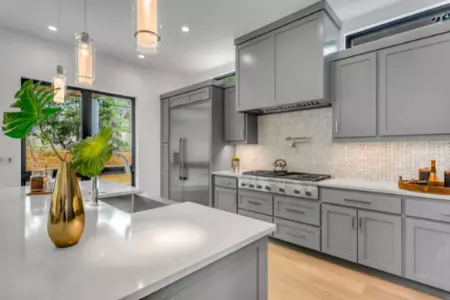
WHEN IS THE BEST TIME TO UPDATE A KITCHEN?
WHEN IS THE BEST TIME TO UPDATE A KITCHEN?
When You’re Selling a Home Updating your kitchen space can be a great way to make your home more appealing to potential buyers. You can do several things to update your kitchen, from painting the walls to replacing the cabinets. Also, you can add new appliances or fixtures or upgrade the flooring. If you’re updating your kitchen space, it’s essential to choose colors and materials that will appeal to a wide range of buyers. You don’t want to choose anything too trendy or specific, as it may not be popular with all potential buyers. Instead, opt for classic colors and materials that will never go out of style. When updating your kitchen space, be sure to keep the room’s functionality in mind. Make sure that you’re adding features that will be useful to the people who will use them in the future. If you want more tips on making your home more attractive when selling, talk with a real estate agent or look online for information and advice from professionals in the field of interior design. You can also find helpful tips by looking through home improvement magazines or websites. When You Install New Flooring Installing new flooring in your kitchen is a great way to update the space. Many different options are available, so you can choose the flooring that best suits your needs and style. If you’re not sure which type of flooring to choose, here are a few factors to consider: The style of your kitchen: If you have a traditional or classic kitchen, choose the flooring that matches that style. If your kitchen is more modern, you might want to choose a more contemporary option. The function of your kitchen: If you often have guests over, you might want to choose a flooring that’s easy to clean and maintain. If you don’t entertain as often, you might want to choose a flooring that’s easy to walk on and keeps noise down. The budget: The cost of your floor can range from as little as $25 for vinyl sheet linoleum up to several thousand dollars for hardwood or tile floors. Your budget is one factor in determining which type of floor will work best for your kitchen. You’ll also want to consider the other materials needed to complete the floor, such as glue or thinset. When installing your new flooring, carefully follow the manufacturer’s instructions and have a few extra pieces on hand for future repairs, if needed. If you’re not sure how to cut or install your floors, ask a professional for help. Installing new flooring can be a big job, but it’s worth the effort! Not only will your kitchen look updated and stylish, but you’ll also enjoy years of use. When You Want to Increase Energy-Efficiency Updating your kitchen space is a great way to make your home more energy efficient. By making simple changes, like adding insulation or installing a new Energy Star-rated appliance, you can save money on your energy bills and help the environment too. When You Want to Rearrange the Layout If you’re considering rearranging the layout of your kitchen, there are a few things you should keep in mind. First, think about what you want to achieve with the redesign. Do you want more storage space? A more open layout? More counter space? Once you know what you want, sketch out a few ideas and gather some inspiration online or from magazines. Once you have a general idea of what you want, start thinking about measurements. You don’t want to start tearing down walls or buying cabinets only to find out they don’t fit! Start shopping for supplies and furniture once you have all your measurements and an installation plan. Be sure to consider the height of your ceilings and the width of your doors and hallways. Finally, don’t be afraid to ask for help! Changing the layout of your kitchen often involves electrical work and plumbing, so consult an expert before you start demo! When You Want to Update Cabinets or Countertops If you’re considering updating your kitchen cabinets or countertops, there are a few things you should keep in mind. First, make sure you have a clear idea of what you want and how much you’re willing to spend. There are a few activities, like hanging cabinets, that you may feel comfortable doing on your own. More skilled work, like fabricating granite countertops, may be best left to the professionals. Measure the space to ensure the new cabinets or countertops fit, and to understand what space you must work with if the new cabinetry or counters come in different dimensions than your current ones. And, if you’re planning to do the work yourself, be sure to read up on the best way to do it. If you’re not sure where to start, there are a lot of great resources online. For example, the website DIY Home Improvement has a ton of information on everything from painting cabinets to installing countertops. You can also find helpful videos on YouTube. Financing the Updates Not sure if you can afford an update? If you don’t have the cash saved to fix up your kitchen, research options for loans to see if it makes sense for you. Make sure you’re aware of the overall project spend and what your monthly payments will be. Also, try to find a lender who offers competitive interest rates and terms such as CreditNinja. Conclusion Updating a kitchen space comes with various degrees of expense but making the decision to change it can come from personal preferences or timing. Think about what will make your kitchen appealing and comfortable for you, your family, or the next owner.
MORE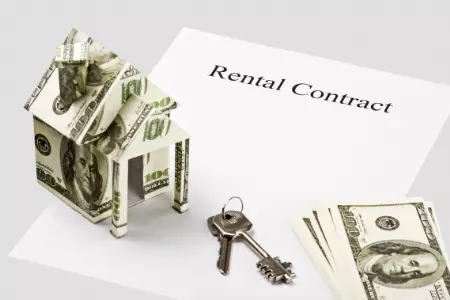
WHAT TO REMEMBER WHEN RENTING OUT YOUR HOME
WHAT TO REMEMBER WHEN RENTING OUT YOUR HOME
Property rental can be a very lucrative business. Sometimes, it’s better to rent out your home instead of selling it. If you’ve acquired a new property and you’re planning to rent out your current home, there are many things to consider. Although renting out your home can bring good profit, it can also be complicated. If you don’t handle it well, you’ll have plenty of headaches to deal with. To avoid stressful issues when renting out your home, read on for a few tips! Understand Your Responsibility When you rent out your home, you’ll immediately be considered a landlord. As a landlord, you have a responsibility to the property and to your tenants. Before you accept tenancy, you must understand the obligations and weigh your decision well. You should be ready to handle many different obligations. Renting out your property saves you from issues that come with leaving a property uninhabited, like vandalism. You also get to generate additional income and enjoy tax breaks. However, along with these benefits are the huge responsibilities that you’ll have to face. For example, you’ll have to repair all damages to the property. Also, you’ll have to handle property maintenance throughout the tenancy contract. If you need funds for repairs before renting out your home, research options for a loan. Try your bank for a home improvement loan, or reach out to an online lender, like Credit Ninja, if that is more convenient. Set a Reasonable Rental Price Having understood and accepted your obligations as a landlord, the next thing is to put your rental property online at a reasonable price. Research your target market and know the market price of rental properties in your location. An appropriate price on your rental property will attract many potential tenants. That way, you’re assured of making profit on your property sooner. Overpricing the property could leave it empty for a long period. That will translate to zero cash entering your pocket… and that can be especially difficult if you are still facing your mortgage payment for the home. Be Selective of Tenants Screening your prospective tenants properly will help you avoid future problems in your rental business. Also, it will ensure you get the right tenants who will care for your property. After setting an appropriate rental price, expect many people to show interest. You can start by advertising your property online and in print to reach a wider market. Also, consider posting it on social media or an online rental market. You can also put an advertisement in a newspaper. Screen interested persons and have them provide basic information such as name, salary, employer, previous address, and others. Insurance Can Be Handy You need to protect your property if you plan on renting it out to random strangers. You don’t know how your future tenants will handle the property. Be sure to get a policy that provides protection for you, the property owner. Property insurance comes with different benefits. One of them is that it can cover the cost of most repairs. Additionally, it would be best if you encouraged your tenants to acquire renter’s insurance. Doing so, you’re absolved of any liability that results from any damage to the tenants’ belongings. Some landlords face litigation because of damages to the renter’s belongings. Insisting your tenants get insurance will save both parties the hassle of litigation if damage was to occur. Renter’s insurance policies are often affordable, and most tenants don’t mind paying for one. Get Proper Permits and Documents Your property rental is considered a business because you profit from it. Since every business must get specific permits and documents to operate, your business will need the same. Do your research or inquire with your local registry on how to go about it. Laws on property rental differ from state to state. There’s no one-size-fits-all advice regarding the laws of renting. Consider talking to a lawyer or your local government authority for the right information. It’s also important to prepare a rental agreement that documents the agreed terms between you and the tenant. Your tenant should have a copy of this document, while you also keep a copy. That way, both parties can always refer to the agreed terms. Having your lawyer prepare this document will give you a more robust agreement. Hire Professionals If you have multiple units for rent, consider hiring some professionals to help you along the way. You might want to start with a lawyer. Your lawyer will be responsible for all the legal aspects of the rental business. The next person you’ll have to hire is a project manager. He or she will oversee the entire operation of your business. Accountants can also be a good addition to your team. Handling the finances of a business can be a tedious job. It’s a good idea to have a trustworthy professional do it for you. You’ll have more time to focus more on other aspects of the business. Are you ok with having to DIY all the messy maintenance jobs? Consider hiring someone who can make sure your properties are well taken care of. The maintenance expert will not only clean your properties, but also ensure everything in it is functional. That way, your tenants get to enjoy a great living experience. In Conclusion Renting out your property isn’t the easiest of jobs. You need to put a lot of things in place to avoid terrible mistakes. Also, you need to ensure the protection of your property, while providing the best home for your tenants. Before you start marketing your new business, it’s important to address considerations discussed above. Doing this will help prepare you for a smooth running of your rental business.
MORE
IS BUYING AN APARTMENT A GOOD INVESTMENT FOR YOU?
IS BUYING AN APARTMENT A GOOD INVESTMENT FOR YOU?
Are you thinking about investing in real estate? An apartment can often be a good investment opportunity. However, if you want to decide whether investing is right for you, you should look at your situation. At the end of the day, it all depends on your circumstances and timing. Consider the following questions to help make your decision. Have you organized your finances? Whether buying an apartment is a good investment for you largely depends on your financial situation. If you have the required funds (savings, inheritance, etc.), it could be a good investment. But, if you must get a loan or apply for a mortgage to finance it, it may not be the perfect time for you. To decide whether buying a home is a good investment for you personally, start by organizing your finances. Consider your current income, expenses, and any outstanding debts. Then, consider all the costs of buying a home – the cost of the apartment, down payment, closing costs, taxes, and costs of hiring professionals such as home inspectors, movers, contractors, real estate agents, etc. Organizing your finances will help you understand if an investment is achievable in your current circumstances. What are your future plans? Another aspect to consider before investing is your future plans. Are you purchasing an apartment and plan to live there? Will you occupy it immediately or down the road? Before you make the move, you will want to research professionals who can help you get comfortable in no time in your new digs. However, you may decide to rent the place out. Will you be able take care of the maintenance yourself, or will you hire someone to care for the property? Do you want to commit the time and energy into being a landlord? Think about these questions and your future in general – investing in an apartment may require money and time beyond the initial purchase. Are you ready to be a landlord? Last, consider whether you are cut out to be a landlord. Most people who invest in real estate do so because they think that is one of the easiest ways to earn money. But, being a landlord takes a lot of work. It includes renovating and upgrading your rental, repairing broken things, knowing the laws, being patient, etc. So, before you buy and rent out your property, ask yourself whether you actually have the time, money, energy, and patience for something like this. If not, you may want to consider hiring someone to manage your property should you move forward with the investment.
MORE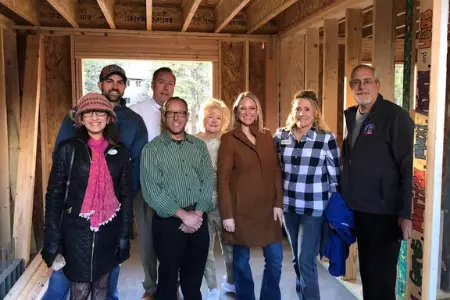
REALTY EXECUTIVES OF FLAGSTAFF SUPPORTS HABITAT FOR HUMANITY WITH SPECIAL INITIATIVE PROGRAM
REALTY EXECUTIVES OF FLAGSTAFF SUPPORTS HABITAT FOR HUMANITY WITH SPECIAL INITIATIVE PROGRAM
Realty Executives of Flagstaff, the longest-running real estate brokerage in Flagstaff, is committed to supporting Habitat for Humanity of Northern Arizona. The firm participated in several programs to raise over $16,000 for the charity last year. Realty Executives of Flagstaff takes pride in promoting its Executive Initiative program, a program the brokerage created to allow agents to donate a portion of their commissions directly to Habitat for Humanity. The program raised over $12,000 to help construct a local Habitat for Humanity home in 2021. The realty firm also participated in Habitat for Humanity’s Stud Program, sponsoring several of the studs used in the construction of the home. Each stud was painted with messages of hope for the new family that will reside in the home. When viewed at an angle, the studs also show the company logo painted by Executive Mark Colletti and his wife, interior decorator, Maggie Colletti. Wayne McCormick, Designated Broker, and his wife, Debra, also raffled a beautiful cedar playhouse to raise additional funds for Habitat for Humanity of Northern Arizona. The pair have been contributing to the organization since 1998. The playhouse, designed to look like a miniature home, was assembled by Executives and featured in Flagstaff’s Candy Cane Lane event and the Flagstaff Chamber of Commerce’s Holiday Lights Parade. The raffle raised an additional $1,800 in funds for Habitat for Humanity. With all their efforts, Realty Executives of Flagstaff raised a total of $16,350 to benefit Habitat for Humanity of Northern Arizona, and plan to continue to bolster their efforts to give back to the community. “Serving a community goes beyond helping people buy and sell property; it’s about creating a true sense of home and belonging for everyone,” said Patrick van den Bossche, President of Realty Executives International. “We are grateful for the leadership team and Executives at Realty Executives of Flagstaff who understand that giving their time and money is beyond a donation- it’s making a difference.” Located in the heart of historic downtown Flagstaff, Realty Executives of Flagstaff has been serving Northern Arizona’s real estate needs since 1977. From mountain homes and land to intricate commercial transactions, Realty Executives of Flagstaff serves Flagstaff, Williams, Parks, Munds Park, Winslow, and the surrounding rural areas. For more information, visit RealtyExecutivesFlagstaff.com.
MORE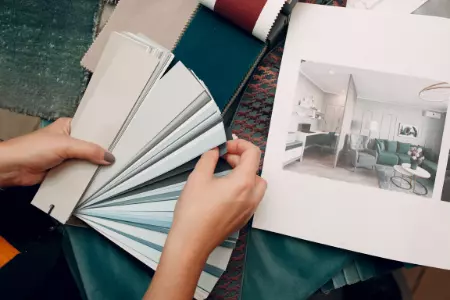
PROMOTING RELAXATION WITH COLOR
PROMOTING RELAXATION WITH COLOR
While there are many different style preferences when it comes to your home, every homeowner can agree that the goal of their home is to be an oasis among a hectic life. Not everyone can afford (or find space) to install a Zen garden, but there are plenty of other options to bring relaxation into the house. The easiest method is to choose colors that promote relaxation effortlessly. Scientists have found that colors can evoke emotions. Just as clashing neon pieces can sometimes induce uneasiness, calm, cool colors can help you unwind. Read on to learn more about some color palettes that can provide some peace and calm in your home. Exploring Color Options Blue tones are seen as peaceful, calm, and cool. According to the Times of India, blue is “a very soothing color that helps calm your mind, slow down your heart rate, lower your blood pressure and reduce anxiety. Blue is believed to have a cooling and astringent effect.” Green is a color that surrounds us and is innately linked with nature, a place many seek out for relaxation. It is positive in many other ways. This article on the psychology of green states that the color is associated with many affirmative phrases such as getting “the green light” or “the grass is greener.” Though keep in mind, green is a color that can range from deep, soothing greens to high-energy neons. It’s important to pick a great middle ground. White can be tricky but can be extremely therapeutic when done right. One extreme example of this is a hospital or medical office that provides a sterile, unwelcoming atmosphere. The other end of the spectrum is a white room with accent pieces to create a clean-cut look, often used in feng shui designs. Very Well Mind says, “white is bright and can create a sense of space or add highlights. Designers often use the color white to make rooms seem larger and more spacious.” Like white, grey is sometimes cited as dull and an energy zapper. Taking a grey, moody sky tone and covering a room in it may not be for you. But grey is cool and thus very soothing for many. Often paired with white and blue components, the color can be a great base level to start a design. According to Oberlo, grey can be a sign of neutrality and balance. Yellow has long been a color of hope and renewal. Representing the sun, brightness, and light, it’s easy to see why the color might promote relaxation in a home. Vincent Van Gogh is one of the color’s biggest fans, saying, “How wonderful yellow is. It stands for the sun.” Depending on the undertones and vibrancy of the yellow you choose, you’ll be able to achieve anything from warmth to energy. Feeling ambitious? Violet and pink are also generally considered positive colors, both representing florals and youthfulness. Adding touches of the colors will brighten a space, making it happier and more soothing to lounge in. Mix and Match Colors You may choose to break down the colors by room, focusing on promoting unique relaxation according to each part of your home. Consider pulling inspiration from your favorite places. For example, many spas use a white and grey color palette to promote relaxation without distractions- a perfect color scheme for bathrooms and bedrooms. Larger areas like living rooms or dining rooms provide an opportunity to experiment with color without overwhelming the entire house. A splash of yellow or a complex patterned wallpaper can be interesting when there is enough space to enjoy the focal point. Minimalist Approaches If you’re prone to changing your mind, keeping a blank canvas on the walls can be a great option so that furniture and accessories can provide the color and interest to the room. Accenting with violet pillows or yellow throw blankets keeps the underlying calmness at the center of the home while also keeping things lively. In addition to considering the colors for the accessories, also think about quantity. Be sure to avoid decorating your space with pieces that clutter or make the room feel small- it can negate the relaxation you’re hoping to achieve. In Conclusion If you are looking for ways to make your home more peaceful, consider taking the next step and buy that can of paint. You can get creative with your palette or simplify it, based on your style. It’s an inexpensive change but invaluable to your rest and relaxation!
MORE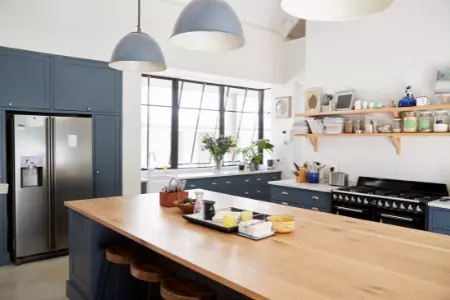
EIGHT INEXPENSIVE WAYS TO UPGRADE YOUR KITCHEN
EIGHT INEXPENSIVE WAYS TO UPGRADE YOUR KITCHEN
Whether you are hoping to increase the value of your home or simply want to rid yourself of an outdated eyesore, upgrading your kitchen is an excellent option for any homeowner. Contrary to popular belief, upgrades don’t have to break the bank or be life-altering changes. In the case of your kitchen, there are plenty of ways to make inexpensive changes that boost the appearance of your home and may help you reach a higher price tag when it comes time to sell. Below are a few options for upgrades under $100 that make a huge splash! 1. Add a Coffee Bar If you’ve got an empty portion of your counter or, even better, a nook, a coffee bar can be an excellent option to elevate your space. Best of all, it’s easy and cheap, and useful! Purchase jars to pour coffee supplies into and inexpensive display mugs for a simple, elegant swap. No need for building or dismantling here – you’ll be able to create an adorable space with little work! 2. Paint the Cabinets Cabinets, especially in older builds, can be outdated and dull. Rather than completely replacing them, an overhaul that could easily cost tens of thousands of dollars, try painting them! Not only will it significantly improve the look of old, faded wood, but the cabinets can become an inexpensive statement piece. Have a mostly white kitchen? Try rich blue cabinets! Looking to brighten the space? Convert your dark wood cabinets to a bright white or pale grey. If you’re feeling ambitious, try the tuxedo method by painting your top cabinets a different shade than the bottom ones for a contrasting, sophisticated look. 3. Add a Inexpensive Backsplash You may think your only option is to cut some real tile and create a swoon-worthy subway tile backsplash. However, you can opt for the cheap alternative: peel and stick tiles. There are plenty of options online for various colors and styles. Best of all, it’s a temporary alteration – one that can be taken down when needed or swapped out when you’re bored. It’s a great option for renters who want to upgrade their space! 4. Add a Statement Light Piece Paired with a fresh paint job, a new lighting system can seriously improve your kitchen’s appearance. A beautiful light fixture hanging in the middle of your kitchen or over the sink will transform the space, helping to achieve the style you’d like. Want a stripped-down industrial look? Try wire lighting with Edison-style light bulbs. Prefer a pop of bright light and color? Try opting for a multi-colored, modern fixture that catches the attention of all visitors. 5. Upgrade Hardware When it comes to cabinets, be sure to add some new hardware. The handle or the nob you use for your cupboard can add more texture, shine, or a pop of color to the kitchen, especially with mono-color schemes. It’s a minute detail, but the difference is immeasurable. From brassy handles to crystal nobs, the hardware reinforces the feel of your space and can complement your vision. Similarly, new faucet hardware can make a world of difference for your countertops. Purchasing a nice faucet at a home improvement store and installing it yourself can be an excellent money-saving hack. 6. Pantry and Counter Organization While this can be overlooked, what’s on the inside of your kitchen cabinets matters just as much as what is outside. Take some time to organize your cabinets, pantry space, and countertops using matching, tidy jars where it makes sense. These jars can hold large amounts of baking ingredients, coffee, kids’ snacks, and more. This frees up space and makes your kitchen look less cluttered. 7. Wallpaper Adding wallpaper can be a great way to alter a focal wall without making a permanent change or breaking the bank. Opting for a fun but manageable pattern helps to bring in a pop of color and will add a layer of uniqueness that complements the rest of your kitchen space. With a statement wallpaper piece, you can often avoid other changes because the wallpaper carries a lot of weight. For example, painting the cabinets for a pop of color may not be necessary with a vibrant wallpaper behind the cabinets. 8. Open the Space with Shelving One difference between homes-built decades ago and homes built more recently is the open shelving concept. Where there used to be cabinet-lined walls to store goods, you can now opt for floating shelves and glass-front cabinets, perfect for artistic displays. Although adding open shelving is inexpensive, before removing any cabinetry, make sure that you have enough cabinet space to accommodate all your dishware and appliances. Knocking out a cabinet or two allows the kitchen to feel more spacious and luxurious. If your kitchen needs a pick-me-up, consider these eight inexpensive ways to upgrade your kitchen before committing to a major remodel. You’ll be able to see which design elements look the best while maximizing function in your space. With a little effort, your kitchen can feel new!
MORE
AVOIDING INSOMNIA IN A NEW HOME
AVOIDING INSOMNIA IN A NEW HOME
Sleeping in new environments can sometimes trigger latent insomniac tendencies. It can manifest in difficulty falling and remaining asleep or waking up early. It’s a well-studied phenomenon in sleep science known as the “first-night effect.” In that state, half of your brain remains alert while the other half sleeps. It’s your brain’s way of protecting you against danger in unfamiliar places. You may experience the “first-night effect” when sleeping at a friend’s house, hotels, or new places. Don’t worry, though. This article will give you advice on how to avoid insomnia in a new home. 1. Sleep Products That Help You Avoid Insomnia in a New Home Depending on how severe your insomnia is, you’ll need the weapons to fight and win this war. These sleep products can help you avoid insomnia in your new house: Sleep mask to minimize the pressure from your eyes. A weighted blanket to help you feel safe, making you fall asleep faster. A white noise machine that enables you to sleep soundly and avoid insomnia in your new house. A full-body pillow that will help you sleep in a comfortable position if you’re a side sleeper. Breathable clothes to help your body’s temperature remain constant throughout the night. A memory foam pillow to rest your head and neck for comfortable sleep. A lofty memory foam mattress topper to help soften the impact of an extra firm mattress. Blue-light-blocking glasses to wear when using electronics. Noise-canceling earplugs that can reduce noises that wake you up in the middle of the night. 0% caffeine herbal teas to help you enjoy better sleep at night. Sleep-friendly light bulbs that eliminate blue light. Other products that will aid in combatting your insomnia include comfortable bedding and a high-quality mattress. Do your research to learn what would work best for you. Sites like Comfybeddy, an Australian company, reviews both mattresses and bedding. The company has been serving people suffering from the lack of sleep for years and has helped many people overcome their insomnia. 2. Consider Sleep Supplements If you’re suffering from insomnia, consider trying sleep supplements, especially melatonin-rich extracts. Melatonin is the hormone responsible for regulating your inner body clock. Thus, one of its purposes is telling your body when to go to sleep and when to awaken. Insomnia is the natural result when your body doesn’t produce enough sleep hormone. So, supplementing melatonin might be an effective way to fight insomnia. Other herbal remedies like lavender, valerian, and chamomile might also help alleviate insomnia. 3. Use the Power of Your Mind If you don’t have the budget to invest in sleep products, seeing as you’ve just invested in a new place, here’s a military technique used by soldiers to fall asleep when they’re in combat. In essence, it’s a modified body scan meditation that lets you get rid of the bodily tensions that might keep you awake. First, lay on your back, relax, and focus on breathing to avoid distractions. Be aware of your body from head to toe. Start with your forehead, face, and neck. After that, calm your shoulders, arms, and hands. Loosen any tension you notice. Move to your chest, stomach, and lower body parts. Keep relaxing your legs, calves, and feet. Imagine yourself sleeping on a hammock on a serene beach. You can use any other imagery that helps you feel safe and protected. Repeat the exercise a few times, and you’ll indeed find it easier to fall asleep. 4. Bring Out Your Old Bedding Replacing bedding in a new house is a good idea. However, your body may feel unsafe in this new environment. Thus, it remains alert to avoid the imagined danger. It’s an instinctive reaction that you can’t reason with. One solution might be temporarily using your old bedding, as this will trick your mind into believing it’s a similar environment. Thus, it’ll be easier to feel safe and fall asleep. 5. Develop Healthier Habits Poor sleeping habits will worsen your insomnia. Thus, you can improve your sleep quality simply by changing your habits. Remember, what you do during the day will come back to haunt you at night. So, adopting these sleep-friendly habits will help you avoid insomnia in your new house: Stay away from artificial lights during the day. Lessen screen time one to two hours before bed. Avoid checking your social media before bed; disturbing news will make you lose sleep. Consume less alcohol. Practice meditation during the day. Take a warm shower before bed. You probably know this already, but it’s worth repeating: make your room as dark as possible. Furthermore, you may want to take inventory of your daily habits and optimize them for better sleep at night. Every change you make will add up to a night of better sleep. Conclusion It’s exciting to move to a new place with all the possibilities opening up to you. However, sleeping in a New Home often triggers insomnia. By following the tips above, you can avoid insomnia in your new house and enjoy better sleep at night. Most likely, it’s a matter of getting used to your unfamiliar environment. So, give it some time. In conclusion, try not to overthink it. Sometimes, it’s just as simple as changing your daily habits!
MORE